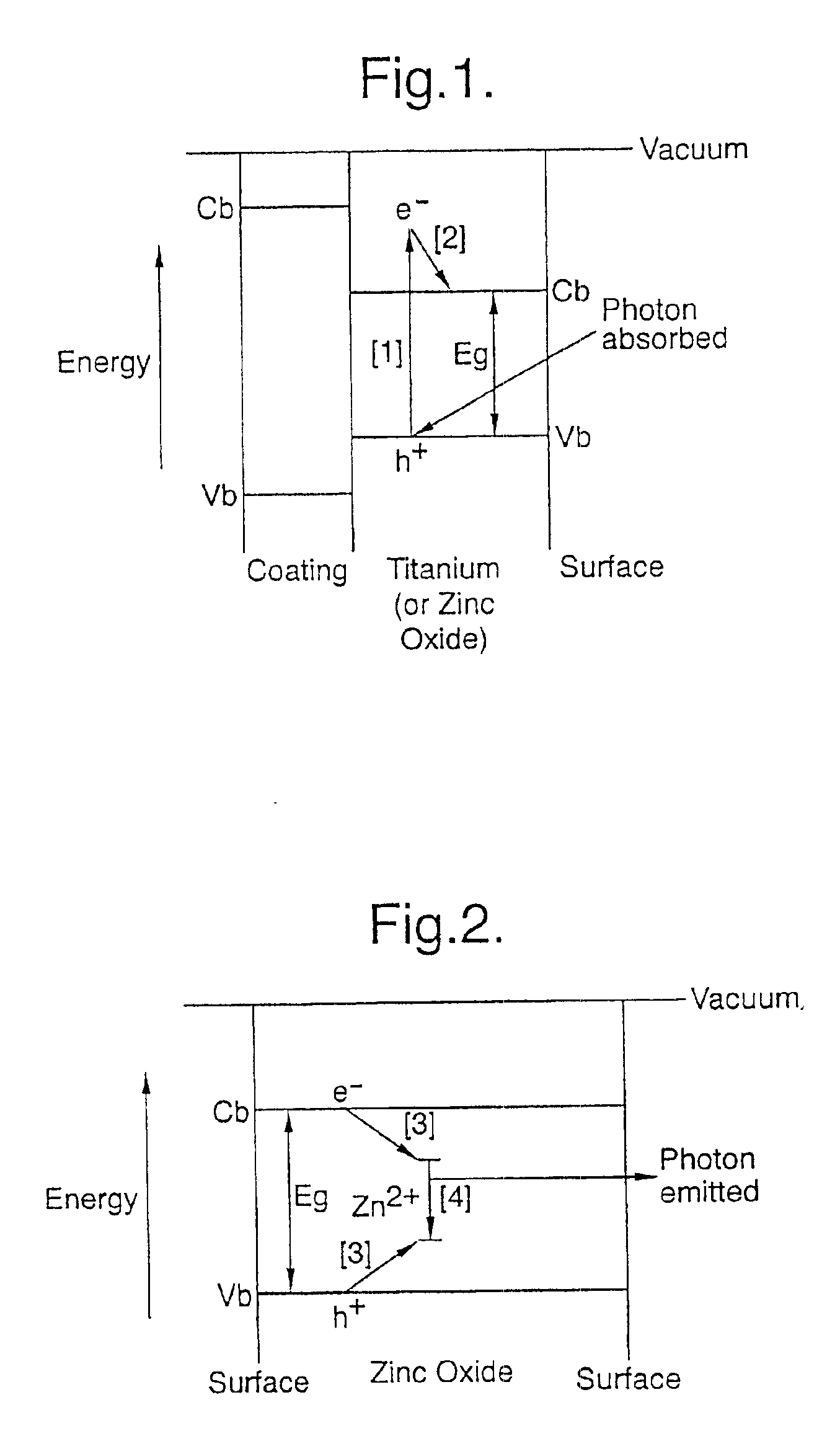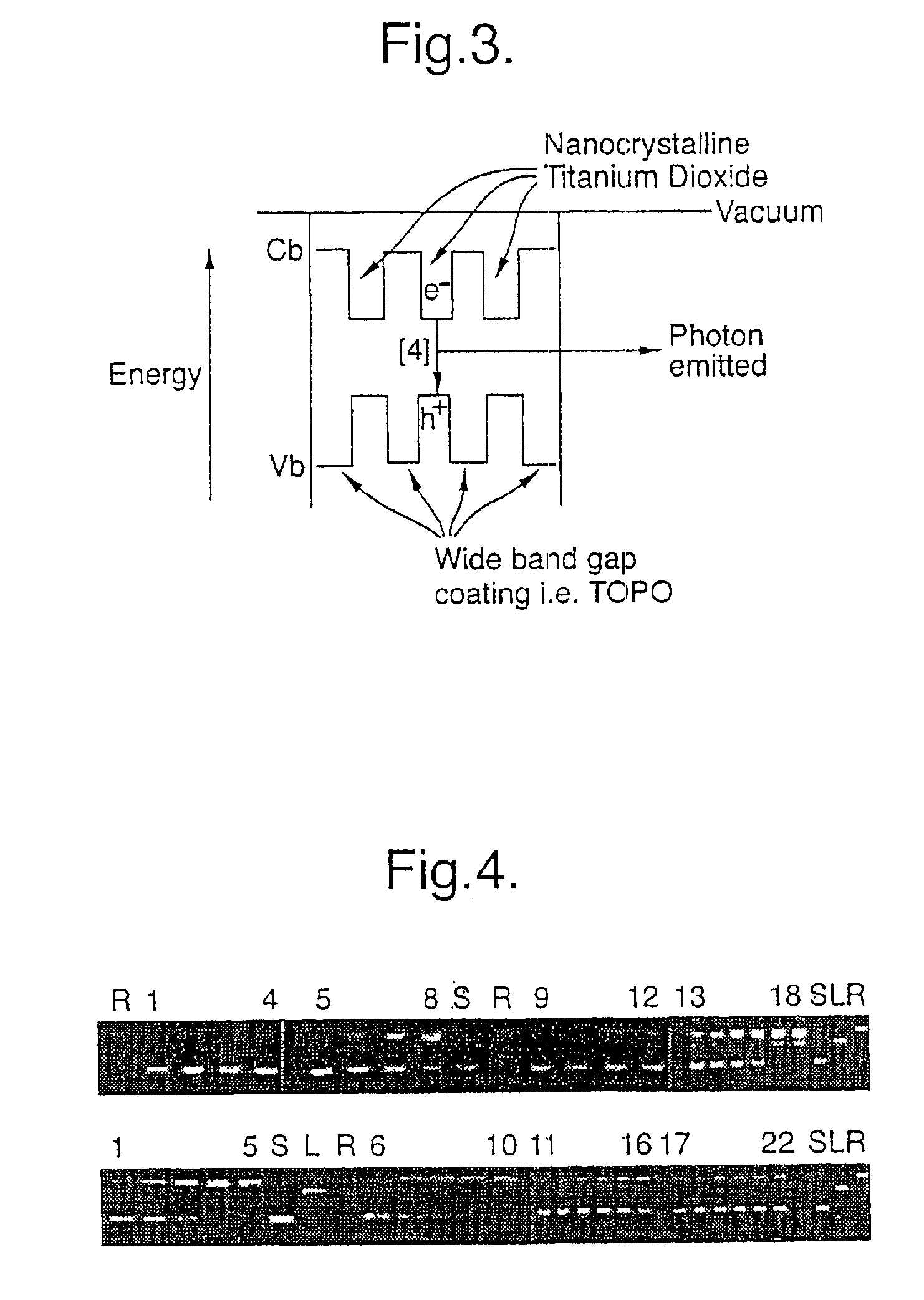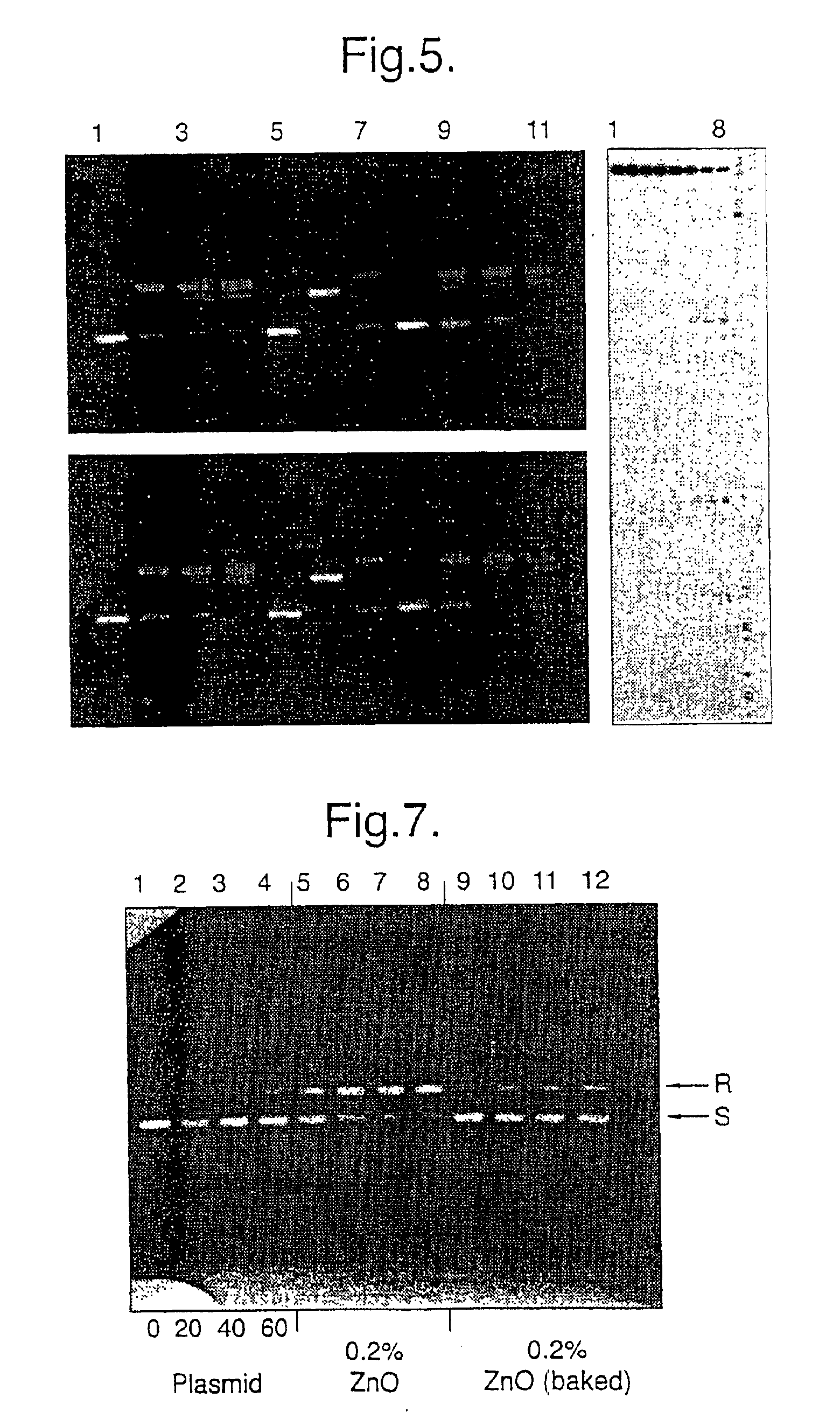Ultraviolet light screening compositions
a technology of ultraviolet light and composition, applied in the direction of manganates/permanentates, chromium oxides/hydrates, other chemical processes, etc., can solve the problems of reducing the production of hydroxyl radicals. , the effect of reducing the migration
- Summary
- Abstract
- Description
- Claims
- Application Information
AI Technical Summary
Benefits of technology
Problems solved by technology
Method used
Image
Examples
example 1
Preparation of Reduced Zinc Oxide Particles
The zinc oxide used was supplied by Aldrich. It has a particle size of 100-200 nm and absorbs in the UV below 390 nm and reemits at 390 nm. It was heated in an atmosphere of 10% hydrogen to 90% nitrogen by volume at 800° C. for 20 minutes. Reduced zinc oxide was obtained and was found to absorb in the UV and reemit in the green at 500 nm.
example 2
Comparison of Strand Breaks Inflicted on DNA by Sunlight in the Presence of Either Normal or Reduced Zinc Oxide.
The DNA used was the plasmid pBluescript II SK+ (Stratagene) prepared and analyzed on agarose gels according to T. Maniatis et al. [Molecular Cloning: A Laboratory Manual. Cold Spring Harbor Laboratory, Cold Spring Harbor, N.Y. (1982)]. It was illuminated in vitro using a solar simulator [J. Knowland et al, FEBS Lett., 324 (1993) 309-313] consisting of a 250 watt ozone-free lamp, a WG 320 filter and a quartz lens, resulting in an estimated fluence between 300 and 400 nm or 12 Watts.m. 2. Zinc oxide samples were suspended in water at 0.4% w / v. 25 μl of each suspension was added to 25 μl of plasmid (2-3 μg of DNA) in 100 mM sodium phosphate pH 7.4 and illuminated as droplets (50μl) on siliconised microscope slides placed on a brass block embedded in ice. Direct strand breaks were assayed from the conversion of supercoiled plasmid to the relaxed form, marked S and R on FIG. 7...
example 3
Preparation of Manganese Doped Titanium Dioxide.
Titanium dioxide (25 g) and manganese (II) nitrate (0.8 g) were mixed in deionized water (100 ml). The resulting mixture was ultrasonicated for 10 minutes and then boiled dry. The material produced was fired at 700° C. for 3 hours to give 1% manganese doped titanium dioxide. Titanium dioxide particles with differing dopant levels were prepared in an analogous manner by varying the amount of manganese (II) nitrate.
It is believed that manganese 3+ions (oxidised from manganese 2+during boiling) are incorporated into the surface of the titanium dioxide host lattice.
PUM
| Property | Measurement | Unit |
|---|---|---|
| particle size | aaaaa | aaaaa |
| size | aaaaa | aaaaa |
| visible wavelengths | aaaaa | aaaaa |
Abstract
Description
Claims
Application Information
 Login to View More
Login to View More - R&D
- Intellectual Property
- Life Sciences
- Materials
- Tech Scout
- Unparalleled Data Quality
- Higher Quality Content
- 60% Fewer Hallucinations
Browse by: Latest US Patents, China's latest patents, Technical Efficacy Thesaurus, Application Domain, Technology Topic, Popular Technical Reports.
© 2025 PatSnap. All rights reserved.Legal|Privacy policy|Modern Slavery Act Transparency Statement|Sitemap|About US| Contact US: help@patsnap.com



